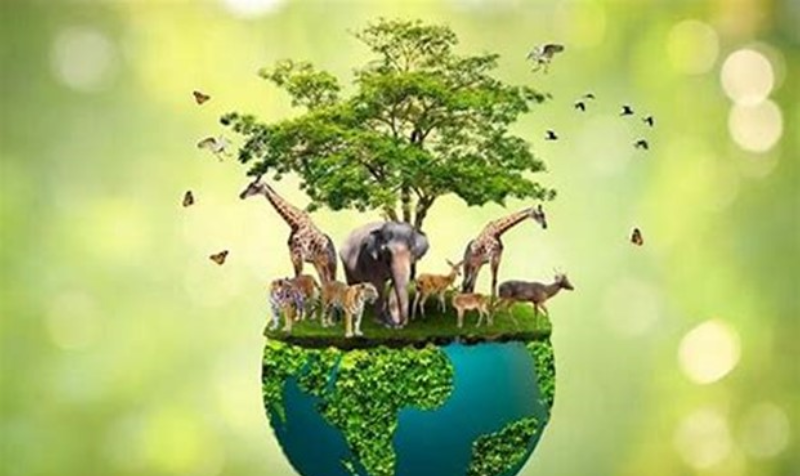In a rapidly changing world, wildlife conservation has become one of the most pressing global issues. With habitats shrinking, pollution increasing, and climate change altering ecosystems, many species of animals and plants are now at risk of extinction. The fight for wildlife conservation is not just about saving the animals we love but about preserving the balance of nature that sustains life on Earth.
This article will explore the importance of wildlife conservation, the threats facing endangered species, the efforts being made to protect biodiversity, and the role of individuals, organizations, and governments in safeguarding the natural world.
1. The Importance of Wildlife Conservation
Maintaining Biodiversity
Biodiversity—the variety of life forms on Earth—is essential for ecosystem stability. Every species, whether large or small, plays a vital role in the intricate web of life. The loss of one species can have a domino effect, disrupting food chains, pollination, seed dispersal, and other ecological processes that humans and animals depend on.
For example, bees, which are crucial pollinators, are experiencing a decline due to habitat loss, pesticides, and climate change. This has serious implications for agriculture and food production, as many crops rely on pollination by bees. Preserving species is thus not just an environmental issue but a matter of human survival as well.
Ecosystem Services
Wildlife provides numerous ecosystem services that are critical to human well-being. These include air and water purification, soil regeneration, climate regulation, and the pollination of plants. By protecting wildlife and their habitats, we also protect these services, which are essential for agriculture, health, and quality of life.
For instance, forests, which are home to a vast array of species, act as carbon sinks, absorbing carbon dioxide and helping mitigate climate change. Wetlands provide natural flood control, while coral reefs protect coastlines from storms and support marine life.
Cultural and Economic Value
Wildlife also has cultural, aesthetic, and economic importance. Many indigenous cultures have deep spiritual and cultural ties to specific animals or ecosystems. Additionally, ecotourism, which centers around the observation of wildlife, contributes billions of dollars to the global economy every year. Protecting wildlife ensures that future generations can continue to enjoy these cultural and economic benefits.
2. The Threats to Wildlife
While wildlife conservation is crucial, numerous threats to animal species and their habitats are contributing to the ongoing biodiversity crisis. These threats include:
Habitat Destruction
Habitat destruction is one of the primary drivers of species extinction. Urbanization, agriculture, logging, and infrastructure development have led to the destruction of vital ecosystems like forests, wetlands, and grasslands. As humans encroach on these areas, species lose their homes, leading to reduced population sizes, lower genetic diversity, and a decline in species’ ability to thrive.
For example, deforestation in the Amazon rainforest is causing a loss of habitat for thousands of plant and animal species. The destruction of coral reefs due to pollution and overfishing is also leading to the decline of marine life.
Poaching and Illegal Wildlife Trade
Poaching and illegal wildlife trade are another major threat to wildlife. Poaching involves the illegal hunting, capturing, or killing of animals for their body parts, such as ivory, fur, or bones. This often targets endangered species, pushing them closer to extinction.
The illegal wildlife trade is worth billions of dollars every year, and it fuels organized crime and corruption. Species like elephants, rhinos, tigers, and pangolins are particularly at risk due to their high value on the black market. Despite global efforts to combat poaching, the illegal trade remains a significant threat to many species.
Climate Change
Climate change is a threat that affects all ecosystems and species. Rising global temperatures, changes in precipitation patterns, and extreme weather events are altering habitats and migration patterns. Species that are already vulnerable due to habitat loss may struggle to adapt to these changes.
Polar bears, for example, depend on sea ice to hunt for seals. As the ice melts due to rising temperatures, polar bears are forced to travel greater distances, often leading to malnutrition and decreased reproductive success. Similarly, coral reefs are experiencing widespread bleaching due to higher ocean temperatures.
Pollution
Pollution, whether in the form of plastic waste, pesticides, or industrial runoff, poses a significant threat to wildlife. Animals can ingest or become entangled in plastic waste, leading to injury or death. Pesticides and herbicides used in agriculture can poison both terrestrial and aquatic wildlife, disrupting ecosystems.
Marine pollution is particularly dangerous for species like sea turtles, dolphins, and seabirds, which often mistake plastic for food. Microplastics, which are small fragments of plastic debris, have entered the food chain, affecting a wide range of species, from tiny plankton to large whales.
3. Efforts to Protect Wildlife and Habitats
While the threats to wildlife are severe, there are numerous efforts being made around the world to protect endangered species and their habitats. These efforts come from governments, conservation organizations, and individuals working together to create a more sustainable future for our planet.
Protected Areas and Wildlife Reserves
One of the most effective ways to conserve wildlife is by creating protected areas, such as national parks, wildlife reserves, and marine protected areas. These areas are set aside for conservation and provide a safe environment for species to live and reproduce without the threat of human interference.
The International Union for Conservation of Nature (IUCN) plays a key role in establishing protected areas and monitoring biodiversity. Organizations like WWF and Wildlife Conservation Society work to protect these spaces and ensure they are managed sustainably.
Anti-Poaching and Law Enforcement
Many countries have enacted strict laws to prevent poaching and the illegal wildlife trade. The Convention on International Trade in Endangered Species of Wild Fauna and Flora (CITES) regulates international trade in endangered species and their products. National parks and wildlife reserves often employ anti-poaching units that patrol areas to prevent illegal hunting and trafficking.
Efforts to combat poaching also involve the use of technology, such as drones, cameras, and GPS tracking, to monitor wildlife populations and detect illegal activity. In some cases, community-based conservation programs engage local people in protecting wildlife and offer alternatives to poaching for income.
Captive Breeding and Reintroduction Programs
For some critically endangered species, captive breeding and reintroduction programs are vital for population recovery. Zoos, wildlife sanctuaries, and breeding centers work to breed animals in captivity and then release them into the wild once they are ready. These programs have been successful in the recovery of species such as the California condor, the Arabian oryx, and the Przewalski’s horse.
While captive breeding is a last resort, it has played a crucial role in preventing extinction and creating a genetic reserve for species on the brink of disappearing.
Community Engagement and Education
Local communities are often the best stewards of wildlife and habitats. By involving local populations in conservation efforts, organizations can create sustainable solutions that benefit both wildlife and people. Community-based conservation initiatives often focus on sustainable livelihoods, such as eco-tourism or sustainable agriculture, that provide economic benefits while conserving the environment.
Educational programs also play an important role in raising awareness about the importance of wildlife conservation. Schools, community groups, and media campaigns are used to inform people about endangered species, the threats they face, and how to get involved in conservation efforts.
4. How Individuals Can Make a Difference
While large organizations and governments play a major role in wildlife conservation, individuals can also make a significant impact. Here are some ways people can contribute:
Support Conservation Organizations
Donating to and volunteering with conservation organizations is one of the most direct ways to support wildlife preservation. Organizations like WWF, The Nature Conservancy, and National Geographic Society rely on donations and volunteers to fund their programs and efforts. Even small contributions can have a big impact when combined with the efforts of many.
Reduce Your Carbon Footprint
Since climate change is a major threat to wildlife, reducing your carbon footprint can help slow down the changes in the environment. Using less energy, driving less, and supporting renewable energy sources can all reduce greenhouse gas emissions and help mitigate the impacts of climate change.
Support Sustainable Products
By choosing sustainably sourced products, individuals can help reduce the demand for goods that contribute to deforestation, overfishing, and exploitation of natural resources. Look for products with certifications like Fair Trade, Rainforest Alliance, or Marine Stewardship Council, which promote ethical sourcing and sustainable practices.
Reduce Waste and Recycle
Reducing waste and recycling can help minimize the impact of pollution on wildlife. Reducing plastic consumption, in particular, is essential for protecting marine species from plastic ingestion and entanglement. Supporting companies that reduce their environmental impact and advocating for better waste management policies can also make a difference.
5. Conclusion: A Call to Action
The fight for wildlife conservation is far from over. While we face many challenges, including habitat destruction, poaching, climate change, and pollution, there is hope. Governments, organizations, communities, and individuals all have a part to play in protecting the planet’s biodiversity and ensuring that future generations can enjoy the beauty and richness of nature.
By raising awareness, supporting conservation efforts, and making environmentally conscious choices, we can all contribute to the preservation of endangered species and their habitats. In the end, protecting wildlife is not just about saving animals—it’s about saving ourselves and ensuring that the delicate balance of life on Earth remains intact.
Key Takeaways
- Wildlife conservation is essential for maintaining biodiversity, protecting ecosystems, and ensuring the sustainability of the planet.
- The major threats to wildlife include habitat destruction, poaching, climate change, and pollution.
- Conservation efforts involve protected areas, anti-poaching laws, breeding programs, and community engagement.
- Individuals can make a difference by supporting conservation organizations, reducing their carbon footprint, and choosing sustainable products.
- The responsibility of wildlife conservation lies with everyone—from governments to individuals—
working together to protect the planet’s natural heritage.

